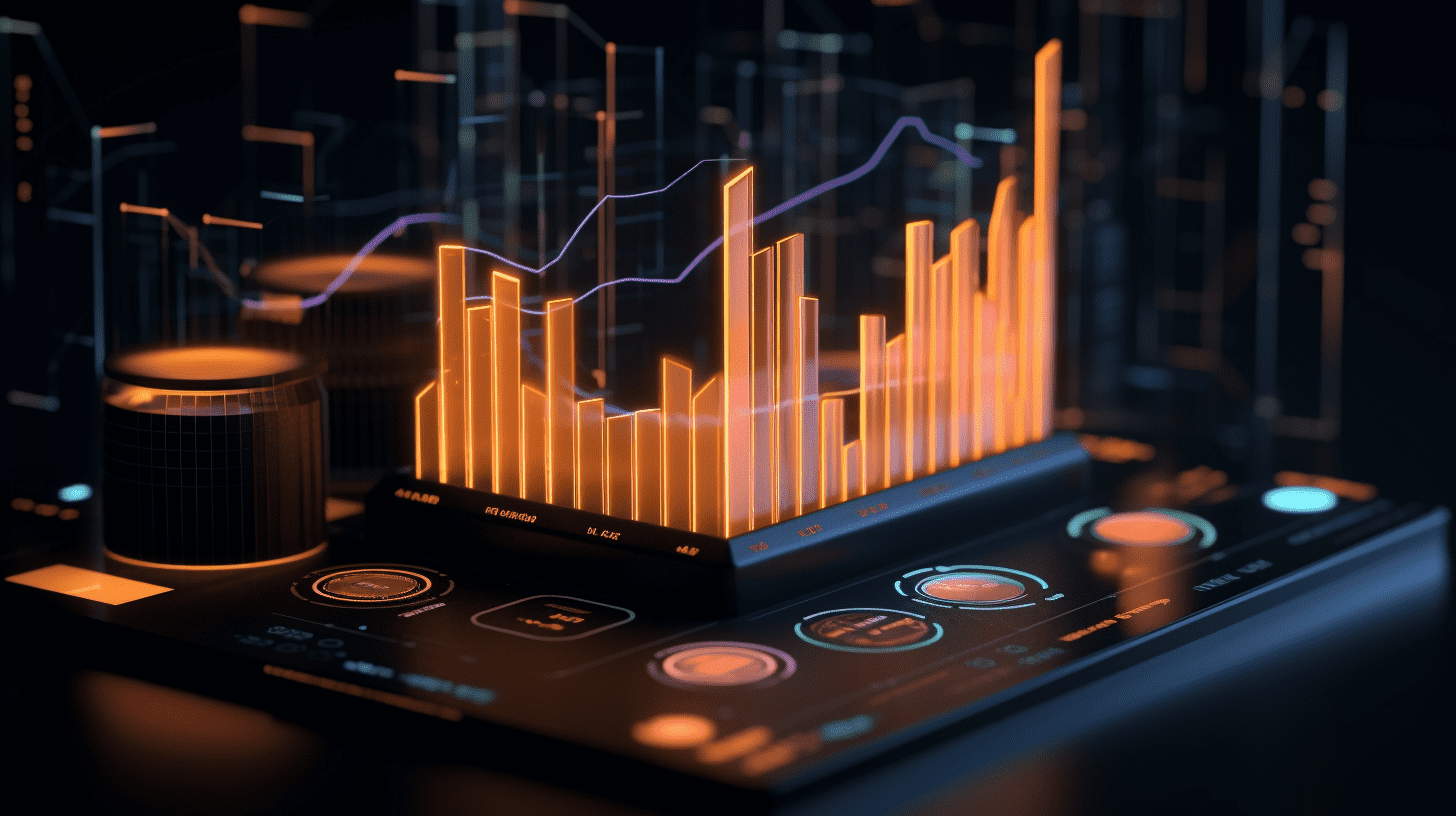AI Infrastructure Craze - allowing Wall Street to "bet without stopping" on "financing for 20-30 years on technology that we don't know what it will be in five years."
The analysis suggests that the key risk lies in providing 20-30 years of financing for technology with an uncertain form five years later, lacking historical data to evaluate future cash flows. Rising electricity costs, pressure from falling AI prices, and other potential factors exacerbate market concerns.
An unprecedented frenzy of AI infrastructure financing is sweeping Wall Street, with billions of dollars flooding into data center construction and bankers not even taking a break during the August holidays. At the same time, industry executives and analysts are beginning to question whether this investment frenzy is giving rise to a new bubble, especially when investors are providing financing for a technology whose form five years from now is uncertain, for a period of up to 30 years.
On August 23, it was reported that insiders revealed JPMorgan Chase and Mitsubishi UFJ Financial Group are leading a loan of over $22 billion this week to support the construction of large data center parks for Vantage Data Centers. Meta, on the other hand, received $29 billion in funding from The Pacific Investment Management Company and Blue Owl Capital to build large data centers in rural Louisiana. This deal highlights the fervor in the market for AI infrastructure financing.
However, doubts are starting to emerge behind the capital pouring in. Key industry participants admit that AI investors may be facing pain. Sam Altman, CEO of OpenAI, believes that the current frenzy of artificial intelligence investments bears similarities to the late 1990s internet bubble. A study by the Massachusetts Institute of Technology shows that 95% of enterprise generative AI projects have failed to generate any profits.
Analysts point out that this contrast is making credit watchers anxious, especially considering that many financing arrangements are based on forecasts of future cash flow from data centers, and the long-term profitability of these technologies remains uncertain. Daniel Sorid, head of U.S. investment grade credit strategy at Citigroup, said:
"Credit investors naturally think back to the early 2000s, when telecom companies may have overbuilt and overborrowed, and then we saw some significant write-downs of those assets."
AI data center financing reaches historic highs
For Wall Street bankers involved in data center financing transactions, there were no holidays this summer.
According to reports, July saw $100 billion in debt and equity deals related to AI, including a $26 billion debt deal for CoreWeave.
In August, Meta reached a transaction of $260 billion in loans and $30 billion in equity at the beginning of the month for its data center construction. This week, JPMorgan Chase and Mitsubishi UFJ Financial Group agreed to underwrite $22 billion in debt for Vantage Data Centers.
According to industry tracking agency Project Finance News, the market expects the size to grow to $60 billion this year, double that of 2024. Considering the total amount of transactions in August, the market may need to revise its estimates for data center financing.
Matthew Mish, head of credit strategy at UBS, said:
"Private credit investment in AI has been running at around $50 billion per quarter over the past three quarters. Even without the large transactions by Meta and Vantage, the funds they provided are already two to three times the size of the public market."
Most of the debt funding currently comes from the private credit market. Many new compute centers are getting financing through Commercial Mortgage Backed Securities (CMBS), which are not tied to corporate entities but to the revenue generated by these complexes.
JPMorgan estimates the amount of CMBS supported by AI infrastructure has increased by 30% from the total in 2024, to reach $15.6 billion.
Transition from self-funding to external financing
It is worth noting that the early construction of infrastructure needed to train and support the most advanced artificial intelligence models was mainly funded by AI companies themselves, including tech giants like Google and Meta. However, lately, more and more funding is coming from bond investors and private credit institutions.
A recent report by Bloomberg Intelligence noted that while the risks of AI-related investments vary greatly, "AI supergiants" like Microsoft and Amazon are mainly financing the construction of new infrastructure through the issuance of high-quality bonds known as "golden corporate bonds." These bonds are considered relatively safe because these companies have strong cash flows and repayment capacity.
Borrowers are typically tech giants with the best balance sheets in the world. They choose to borrow because the numbers are too big, and the debt often belongs to the data centers they are building, not the company itself.
The thriving private debt fund market means more capital is seeking higher returns. Data center transactions meet this demand, offering higher yields than typical corporate loans. Therefore, investors are seizing the opportunity to earn extra cash.
Analysts also point out that with Federal Reserve Chairman Powell becoming more open to rate cuts, the pursuit of yield will become more urgent.
Industry key participants admit that AI investors may face pain
However, as the scale of AI data center financing experiences explosive growth, industry key participants admit that AI investors may face pain.
According to a report from Massachusetts Institute of Technology (MIT), the spearhead of the global AI wave, Sam Altman, CEO of OpenAI, believes that the current craze in the AI field shares many similarities with the dot-com bubble of the past. He also pointed out that OpenAI will spend trillions of dollars on data center construction in the near future.
In this trillion-dollar-driven gamble, there are bound to be losers. Altman ominously stated that "someone" will lose "an amazing amount of money." But he quickly added, "We don't know who."
This week, a report from MIT revealed the grim reality of enterprises' AI investments, stating that while companies have high hopes for generative AI, the vast majority of projects have failed to produce any tangible financial impact, with "95% of enterprises receiving zero return on their generative AI investments."
As the frenzy of financing for AI data centers grows, warnings from industry key participants are making credit observers nervous.
Ruth Yang, Global Head of Private Market Analysis at S&P Global Ratings, bluntly pointed out the risks of this financing model:
"Data center transactions are 20 to 30-year financing for a technology that we don't even know what it will look like in five years. We are conservative in assessing future cash flows because we don't know what it will look like, and there is no historical basis."
According to UBS Group, a loan form called "Payment in Kind (PIK)" is becoming more common in the technology private credit sector, which allows borrowers to pay interest in debt instead of cash due to cash tightness. In the second quarter, in BDC companies investing in small and medium-sized enterprises, the proportion of "paper interest income" increased to 6% of total income, the highest since 2020, indicating a rising financial pressure on borrowers.
Business Development Company (BDC) is an investment company that specializes in investing in small and medium-sized enterprises or startups, providing investors with access to the private market. The increase in the proportion of PIK in BDC income indicates that more interest they gain is from "paper interest" (non-cash), reflecting an increasing financial pressure faced by borrowing companies.
It is worth noting that market data shows signs of a bubble emerging. CB Insights data shows that there are currently 498 AI unicorn companies with a total valuation of $2.7 trillion. Valuations of AI startups have exceeded 100 times.
More worrying is the questionable unit economics of AI startups: users pay $1, the application layer company pays $5 to the infrastructure model provider, the latter pays $7 to the hyperscale compute service provider, and ultimately pays $13 to the GPU manufacturer.
The well-known financial blog ZeroHedge warned in an article to be careful of the "chasm period" in the AI technology hype cycle, stressing that investors must be clear about which stage of Gartner's emerging technology cycle each AI technology they invest in or deploy currently belongs to. Gartner's Technology Hype Cycle model divides the development of emerging technologies into five stages: Innovation Trigger, Peak of Inflated Expectations, Trough of Disillusionment, Slope of Enlightenment, and Plateau of Productivity.
Potential ending factors: electricity costs, price pressures
Many AI debt transactions are based on the idea that the data centers they build will generate enough income to repay the loans. The cost battle among top artificial intelligence providers will be closely watched. If AI prices drop again, some investors may worry about their ability to repay.
The situation of electricity demand may also become the end of the borrowing frenzy. Data centers consume a large amount of electricity, and electricity prices have risen nearly 7% this year. Regulatory agencies attribute the soaring demand to data centers. Rising electricity prices at least mean higher costs for operating data centers.
Texas in particular is very displeased with the price increases, passing a law that gives grid operators the ability to reduce power supply to data centers in a crisis.
Doubts are also starting to emerge in the stock market. The typical representative of AI risk and return, CoreWeave, had a notable IPO earlier this year, but the company's stock price has dropped nearly 50% from its peak.
This article is reproduced from Wall Street Seen, GMTEight Editor: Chen Yufeng.
Related Articles

After the U.S. Census Bureau "lost credibility," Wall Street increasingly relies on "private surveys": ADP employment data, Challenger layoffs, and other data become more important to the market.

Chen Maobo: Hong Kong should deepen exchanges and cooperation with the Middle East, as it is in a favorable historical moment.

National Energy Administration: In July, the national electricity market traded volume reached 6246 billion kilowatt-hours, a year-on-year increase of 7.4%.
After the U.S. Census Bureau "lost credibility," Wall Street increasingly relies on "private surveys": ADP employment data, Challenger layoffs, and other data become more important to the market.

Chen Maobo: Hong Kong should deepen exchanges and cooperation with the Middle East, as it is in a favorable historical moment.

National Energy Administration: In July, the national electricity market traded volume reached 6246 billion kilowatt-hours, a year-on-year increase of 7.4%.

RECOMMEND

Advertising Revenue Contracts as Baidu Reconfigures Core Search Business amid AI Transition Pains
22/08/2025

United States and European Union Release Joint Statement Confirming Agreement on Trade Deal Framework
22/08/2025

Boeing (BA.US) Nears Landmark Deal to Sell Up to 500 Aircraft to China, Signaling Possible End to Years of Sales Freeze
22/08/2025


